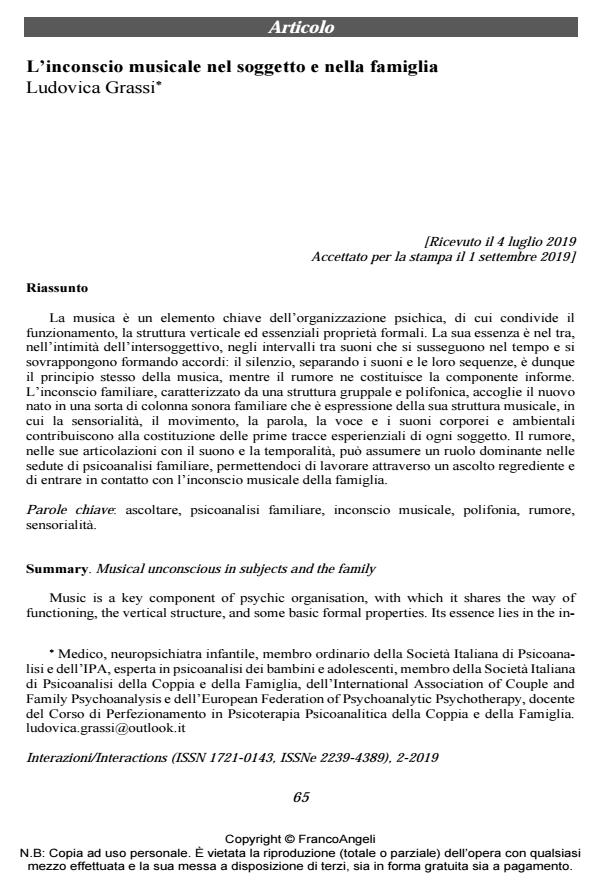Musical unconscious in subjects and the family
Journal title INTERAZIONI
Author/s Ludovica Grassi
Publishing Year 2019 Issue 2019/2
Language Italian Pages 16 P. 65-80 File size 193 KB
DOI 10.3280/INT2019-002005
DOI is like a bar code for intellectual property: to have more infomation
click here
Below, you can see the article first page
If you want to buy this article in PDF format, you can do it, following the instructions to buy download credits

FrancoAngeli is member of Publishers International Linking Association, Inc (PILA), a not-for-profit association which run the CrossRef service enabling links to and from online scholarly content.
Music is a key component of psychic organisation, with which it shares the way of func-tioning, the vertical structure, and some basic formal properties. Its essence lies in the in-between, in the intimacy of the intersubjective, in the intervals between sounds that come in succession in time and are superimposed in accords: silence, that separates sounds and their sequences, is therefore the principle itself of music, while noise is its unformed component. The family unconscious, marked by a group and polyphonic structure, receives the newborn (and the unborn) into a sort of family soundtrack that conveys its musical structure, where sensoriality, motion, word, voice, as well as body and environment noises, account for the subject’s earliest experiential traces. Noise, in its articulation with sound and temporality, may take on a major role in family psychoanalysis sessions, allowing us to work through a regre-dient listening and to reach to the family musical unconscious.
Keywords: Family psychoanalysis, listening, musical unconscious, noise, polyphony, sensoria-lity.
Ludovica Grassi, L’inconscio musicale nel soggetto e nella famiglia in "INTERAZIONI" 2/2019, pp 65-80, DOI: 10.3280/INT2019-002005